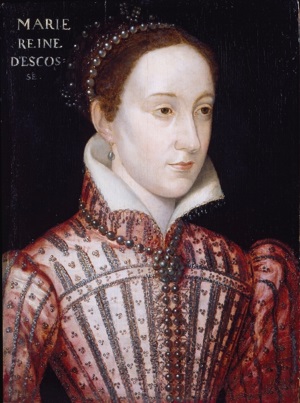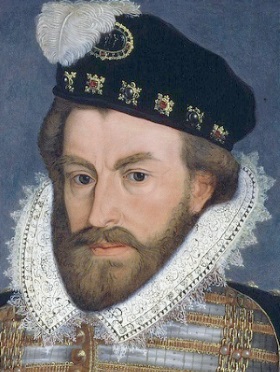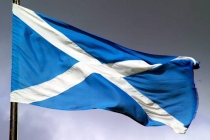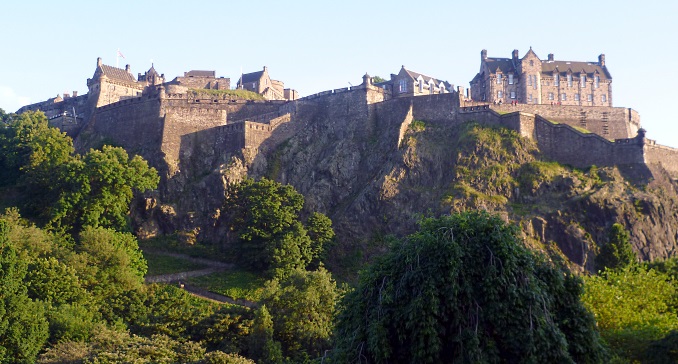The Rise And Fall of Mary, Queen Of Scots

Born in Linlithgow Palace on 8th December 1542, Mary Stuart was the daughter of James V of Scotland and Mary of Guise. James V (10 April 1512 – 14 December 1542) was the son of King James IV of Scotland and Queen Margaret Tudor, a daughter of Henry VII of England. Mary of Guise was French and the eldest daughter of Claude of Lorraine the Duke of Guise. Six days after the birth of Mary Stuart her father died and she became Queen of Scotland. Her mother was chosen as regent to rule on her daughter’s behalf, and Mary was sent to France in 1548 where she lived as part of the French royal family.
In April 1558, Mary married the heir to the French throne Francis. In July 1559 Francis succeeded his father becoming King Francis II and Mary became Queen of France as well as of Scotland. This uniting of the French and Scottish crowns caused considerable concern to England. In December 1560 Mary's husband Francis II died after a reign of just 17 months. Mary decided to return to Scotland at the age of 18, a Catholic monarch in what had become a nation where the Protestants were in the ascendancy and on 19th August 1561, she landed at Leith (Scottish Gaelic: Lite). Understanding the difficulty of her situation she took the advice of James Stewart, 1st Earl of Moray (c. 1531 – 23 January 1570) who was her half-brother and William Maitland of Lethington. James Stuart had become a supporter of the Scottish Protestant Reformation and despite their religious differences, Moray became the chief advisor to his sister.
On the 29th July 1565 Mary married her first cousin Henry Stewart, Lord Darnley. This was a marriage that was deemed unacceptable to the Protestants, including James Stewart, Earl of Moray, who supported by other nobles organised a rebellion. Although Mary suppressed this uprising she lost trust in her Protestant advisors and withdrew some of her support from the Reformed church. Queen Mary’s relationship with Darnley broke down with many accusations of infidelity against him. Mary increasingly turned to her Italian secretary, David Rizzio, for support. However, the Protestant lords were highly suspicious of Rizzio believing him to be a papal agent. At the same time Darnley accused the Queen of being intimate with him. A group of Protestant lords, supported by Darnley, murdered Rizzio in the presence of Mary on 9th March 1566. She was six months pregnant with Darnley’s child at the time.
On the 19th June 1566 she gave birth to a son, James, at Edinburgh Castle, who would eventually become James VI of Scotland and James I of England. Mary remained married to Darnley and in January 1567 he returned to Edinburgh (Scottish Gaelic: Dùn Èideann) staying at a house within the church grounds of St Mary in the Fields known as Kirk o' Field. It was here on February 10th, 1567 Darnley was murdered. James Hepburn, Earl of Bothwell,(c. 1534 – 14 April 1578) and a friend of the Queen was thought to have instigated the murder. It remains doubtful that she had any knowledge of the plot and after a brief trial he was acquitted. There is a suggestion that Mary was subsequently abducted by Bothwell and just three months after Darnley’s death Mary and Bothwell, who had secured a divorce from his wife, were married in a Protestant service on 15th May, 1567.
This wedding was a disaster for the Queen. Many of all branches of the Christian faith thought it unacceptable that she should marry the man accused of murdering her husband. For Catholics her marriage to a divorced man in a Protestant service rended it invalid. A number of nobles also had an intense dislike for Bothwell and raised an army against him and Mary. On the 15 June 1567 a battle took place at Carberry Hill near Musselburgh (Gaelic: Baile nam Feusgan) where the Queen was forced to surrender while Bothwell fled. Mary was imprisoned at Loch Leven Castle on an island in Loch Leven (Scottish Gaelic: Loch Lìobhann) where on 24th July 1567 she was forced to abdicate in favour of her one year old son who became King James VI of Scotland. Mary’s half-brother, James Stewart, Earl of Moray was appointed Regent on behalf of his nephew. This was not the end for Mary though, because she escaped captivity and gathering an army fought a battle at Langside on 13th May 1568. She was defeated and Mary left Scotland for England to seek the support of her cousin Queen Elizabeth I (7 September 1533 – 24 March 1603).

Mary was never to return to Scotland and spent the rest of her life in captivity in England. Over this period a number of Catholics seeking the demise of Queen Elizabeth saw Mary as a legitimate alternative monarch. Mary Stuart was the granddaughter of Margaret Tudor who was the sister of Henry VIII and Elizabeth's father. For many Mary's claim appeared stronger than Elizabeth's because Catholics saw Henry's marriage to Anne Boleyn (Elizabeth’s mother) as illegal. Elizabeth continued to view Mary as a serious threat to the English throne although plots against her reign were foiled by English agents. The end came for Mary when she was implicated in the 1586 Babington plot to assassinate Elizabeth. This plot was uncovered by Sir Francis Walsingham (c. 1532 – 6 April 1590) who was principal secretary to Queen Elizabeth I. He used it as an opportunity to entrap Mary for the purpose of removing her as a claimant to the English throne.
Mary wrote letters to Anthony Babington (24 October 1561 – 20 September 1586) who was convicted of plotting the assassination. With this incriminating evidence against her Mary was found guilty of complicity and sentenced to be beheaded. Although it is said that Elizabeth was reluctant to execute her cousin, she gave the order that was carried out at Fotheringhay Castle on 8th February 1587 when Mary was aged 44. Mary was initially buried at Peterborough Cathedral. When Elizabeth I died in 1603 without issue Mary’s son, James, ascended the English throne. In 1612, James arranged to have his mother’s remains re-interred in a chapel opposite the tomb of Elizabeth I at Westminster Abbey.
- Scottish
- English
- Log in to post comments






